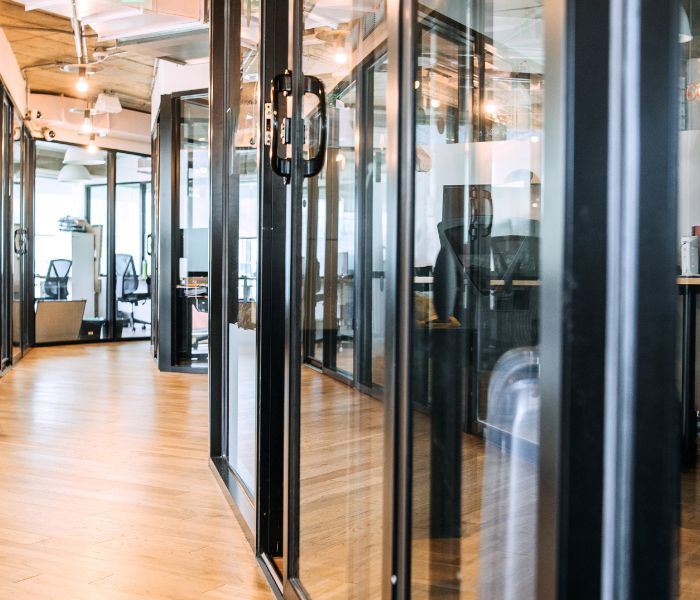Businesses continue to grapple with planning for the return of employees to the workplace after the COVID-19 pandemic. Business leaders want to get it right, but there are many factors to consider. Should you return the full workforce to the office at the same time or ease back into it? What policies will you adopt about working from home in the future? How will you ensure the workplace makes employees feel safe and secure?
In the midst of this planning, businesses that have suffered financial setbacks as a result of COVID-19 are looking for ways to cut costs. There’s a lot of prime commercial real estate sitting with extremely low utilization. Businesses with Workplace Management Solutions are in a better position to plan for a return to the workplace while at the same time optimizing their real estate investments and controlling workplace-related costs.
FM:Systems helps our customers strategically manage costs while adding value to their business. Here are three ways Workplace Management Solutions can deliver cost savings while positively impacting the employee experience:
- Reduce your overall real estate portfolio and optimize remaining floor plans to account for COVID-19 social distancing while supporting productivity and culture.
- Get strategic about cleaning and sanitization to heighten efficiency and cost-effectiveness while making employees feel safe.
- Track and maintain fixed assets in a hybrid workplace where they move between home and the office.
Let’s explore each concept more deeply to discover how FM:Systems Workplace Management Solutions can help you strategically manage costs while delivering extra value to your organization.
Data-driven decisions about your real estate portfolio
After work quickly shifted to home offices during COVID-19 stay-at-home orders, businesses previously skeptical about large-scale remote work policies got to see it work first-hand. At most businesses, employees were more productive, collaborative, and innovative than their employers had anticipated. Therefore, many companies have made plans to pursue a hybrid workplace model after the pandemic, with employees working from home some days and at the office on other days.
The hybrid workplace model mean that fewer employees will use real estate assets on any given day. For some corporations and commercial property managers, this new reality dictates disposing of some real estate.
With fewer people coming in every day, you can limit the number of available desks. Fewer desks might mean eliminating an entire floor or even an entire location. First, you will need to model what you believe the daily volume of employees coming into the office will be and then use that to determine the desk sharing ratio that suits your organization. Using your desk sharing ratio and allowing square footage for social distancing, you can determine the ideal spaces and locations for your workforce going forward, then evaluate leases and owned property to see what you release vs. retain.
How Workplace Management Solutions help: FM:Systems Workplace can help maximize real estate cost savings and optimize properties in the portfolio. :
- Determine workspace density and square footage needed for social distancing.
- Use occupancy sensors to identify traffic patterns and optimize floor plans to relieve congested common spaces.
- Support a hybrid workforce by determining the best desk sharing ratio.
- Enable employees to schedule and reserve workspaces and meeting rooms.
- Identify the ideal spaces to retain as well as the spaces that could be released.
Safety-centered maintenance and sanitization to reduce anxiety
When employees return to the office, they may feel anxiety about being in proximity to other employees. It is important they can see your company closely follows CDC guidance for cleaning and sanitization to keep them safe. Automation can ensure this is done with efficiency and accuracy. It will really instill employees’ confidence when they see a conference room get used and a cleaning crew arrives within minutes to sanitize it.
How Workplace Management Solutions help: Automation can help focus sanitation efforts on the areas that need them most, while also providing employees reassurance about the safety of your cleaning protocols:
- Cleaning staff can use desk reservations and schedules to focus sanitization efforts on workspaces that have been used.
- FM:Systems sensors indicate a space that has been occupied, but not yet cleaned in real-time, allowing custodial staff to access a live floorplan view on a tablet and execute cleaning protocols as desks are vacated.
- Both solutions reduce custodial expenses and eliminates the inefficiency of cleaning a desk without knowing if it had actually been occupied.
On and off campus fixed asset management
FM:Systems’ CTO, Joe Karbowski recently penned an article for Forbes titled, “Where Did All the Laptops and Office Chairs Go?” In the article, he noted a lot of corporate fixed assets had gone unaccounted for during the pandemic. In the rush to send employees home to work, many had taken chairs, laptops and monitors to create home office spaces. Without a good tool for tracking these assets, the IT and facilities team could easily lose visibility into the real cost of their fixed asset management.
In the hybrid work world, how will businesses locate, record, maintain, and manage fixed assets if they move between the office and employee homes? The goal, of course, is to get employees the things they need to be productive working from home, while keeping the right assets in the office, too.
How Workplace Management Solutions help: Automating physical asset management helps businesses improve the ROI on fixed assets in a number of ways:
- Keep detailed records about asset condition, warranties, and other attributes.
- Track the physical location of assets, whether at employees’ homes or the workplace.
- Maintain a centralized database of assets for reporting and analysis.
- Link assets to cost centers and keep track of maintenance costs for greater accountability.
In part two of this blog, we’ll take a look at the soft cost savings Workplace Management Solutions provide to businesses and how this technology confers longer-term strategic advantage through digital transformation.
Register for our next webcast where we’ll dive into challenges the market is facing and how you can implement changes to your current strategy to create a workplace that is dynamic, flexible, and resilient.











